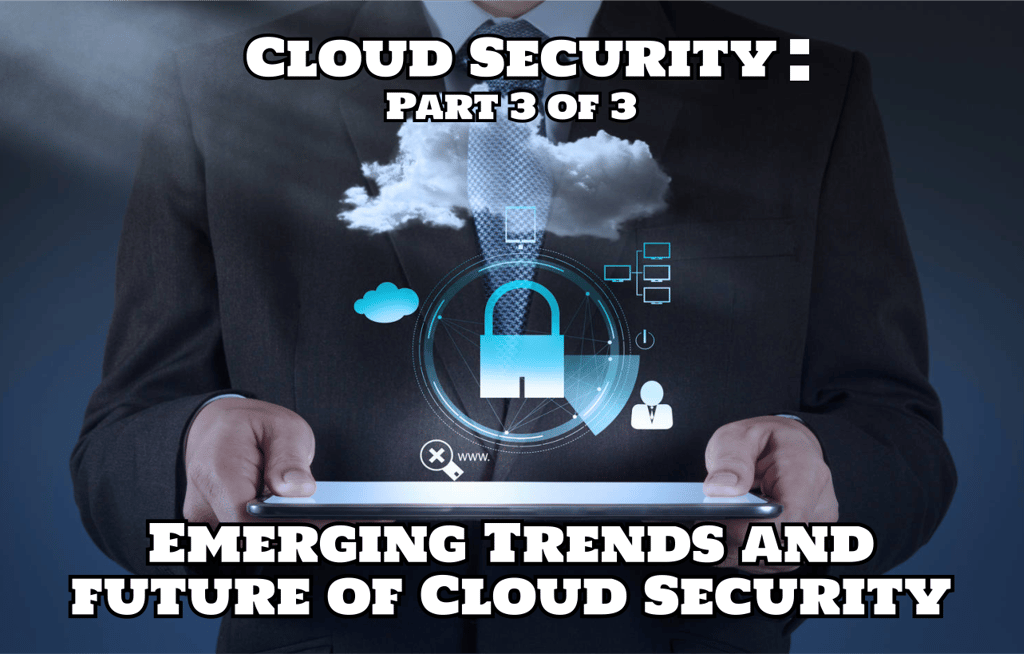Emerging Trends in Cloud Security
Cloud security is evolving fast. Discover trends like AI-driven threat detection, SASE, DevSecOps, CNSPs, SOAR, Zero Trust, and quantum-resistant encryption. Learn how proactive, layered security can help organizations protect data and stay ahead of threats.
CYBER SECURITY
Toz Ali
5/17/20252 min read


As the cloud landscape rapidly evolves, security solutions must adapt to emerging threats and complex hybrid environments. These key trends highlight the future direction of cloud security:
1. AI and Machine Learning for Threat Detection
AI-driven tools help identify anomalous behavior, detect threats in real-time, and automate incident response. These systems continuously learn from vast datasets to refine accuracy and reduce false positives.
Companies like Darktrace and CrowdStrike use AI to recognize unusual patterns in network activity, enabling early detection of advanced persistent threats (APTs) before damage is done.
2. Privacy-Enhancing Computation
This includes techniques such as homomorphic encryption, federated learning, and secure multi-party computation. These methods allow data to be processed without revealing the underlying information, improving confidentiality in shared environments.
Google and Apple have used federated learning in their mobile operating systems to build predictive models without sending raw data to their servers, preserving user privacy while gaining insights.
3. Secure Access Service Edge (SASE)
SASE is an architectural model that combines network security functions—like Secure Web Gateways (SWG), Cloud Access Security Brokers (CASB), Firewall-as-a-Service (FWaaS), and Zero Trust—with wide area networking (WAN) capabilities to support the dynamic secure access needs of organisations.
Cisco and Palo Alto Networks have integrated SASE into their enterprise platforms to ensure consistent security enforcement regardless of user location or device.
4. DevSecOps Integration
DevSecOps embeds security into the DevOps lifecycle, enabling early detection and resolution of vulnerabilities within code, containers, and infrastructure-as-code (IaC).
organisations using tools like GitHub Actions and Terraform now incorporate security checks (e.g., secrets scanning, policy enforcement) directly into CI/CD pipelines to catch risks before deployment.
5. Cloud-Native Security Platforms (CNSP)
These platforms offer integrated visibility and control across multi-cloud environments. CNSPs provide capabilities such as workload protection, identity management, compliance monitoring, and container security.
Microsoft Defender for Cloud and Prisma Cloud by Palo Alto offer comprehensive CNSP features tailored for modern cloud infrastructures including Kubernetes and serverless environments.
Tools and Technologies Supporting Cloud Security
EDR Tools – CrowdStrike, SentinelOne for endpoint protection.
CSPM Platforms – Prisma Cloud and Microsoft Defender assess configurations.
WAFs – Protect web apps from SQLi, XSS, and other OWASP threats.
Native Security Tools – AWS Shield, Azure Security Center, Google Cloud Armor.
Real-World Cloud Security Breaches: Lessons Learned
Capital One (2019): Over 100M records exposed due to misconfigured WAF.
Facebook (2019): Exposed S3 buckets by third parties.
Toyota (2023): Supplier-related breach compromised source code and personal data.
The Future of Cloud Security
Quantum-Resistant Encryption – Prepares for quantum computers' ability to break traditional cryptography. PQC standards are being developed.
Security Automation (SOAR) – Automates threat detection and incident response.
Privacy-Enhancing Technologies – Secure data analysis with PETs like homomorphic encryption.
Zero Trust Expansion – Micro-segmentation, continuous verification across systems.
Decentralized Infrastructure – Blockchain and edge computing enhance resilience.
Thoughts
Cloud security is not just an IT concern—it’s a strategic business priority. As companies increasingly rely on cloud environments, a proactive and layered security approach is necessary to mitigate risks and maintain compliance. Whether you're a small startup or a global enterprise, investing in the right tools, training, and cloud providers ensures your data—and your customers' trust—remain secure.
